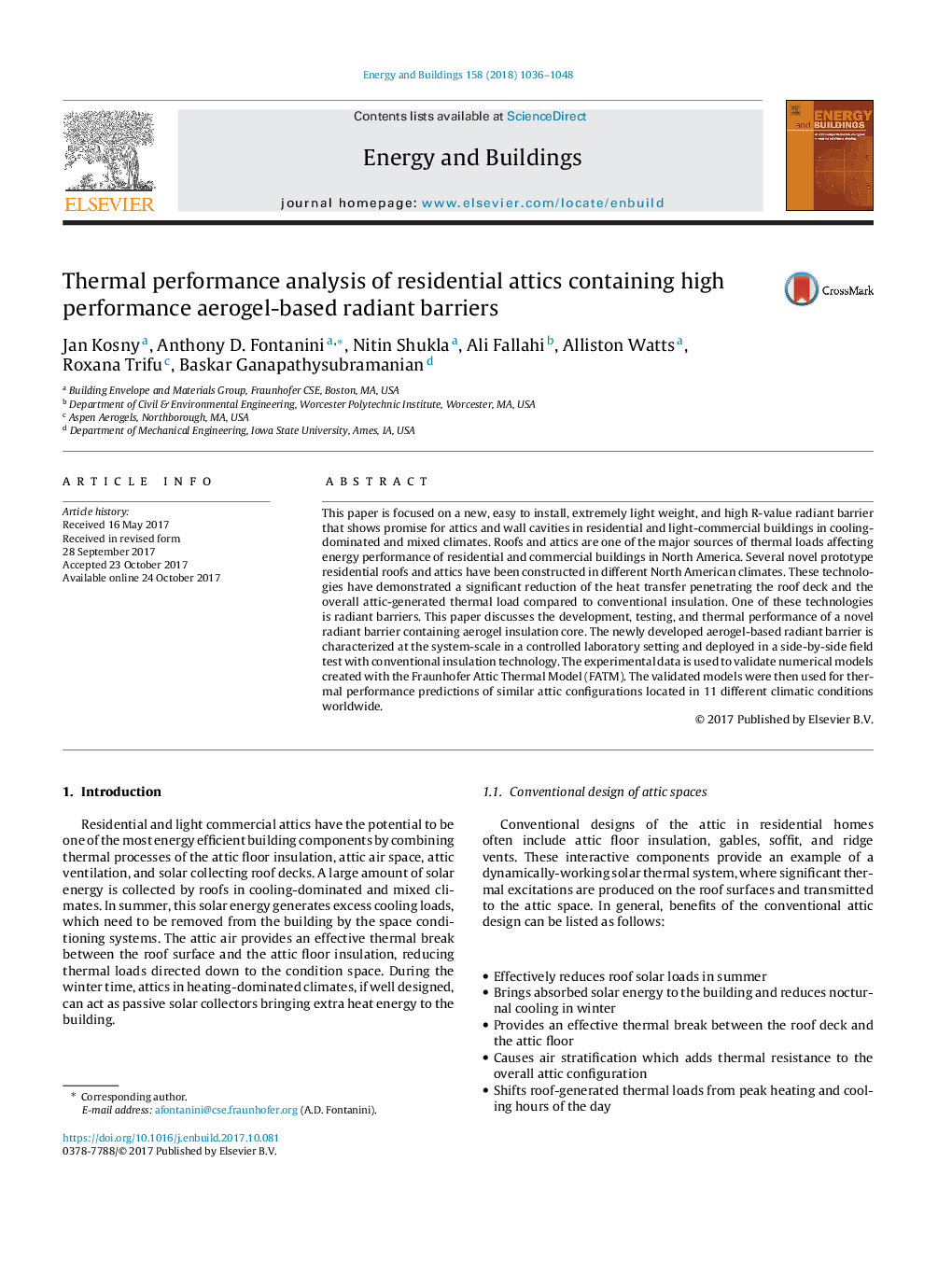| Article ID | Journal | Published Year | Pages | File Type |
|---|---|---|---|---|
| 6729482 | Energy and Buildings | 2018 | 13 Pages |
Abstract
This paper is focused on a new, easy to install, extremely light weight, and high R-value radiant barrier that shows promise for attics and wall cavities in residential and light-commercial buildings in cooling-dominated and mixed climates. Roofs and attics are one of the major sources of thermal loads affecting energy performance of residential and commercial buildings in North America. Several novel prototype residential roofs and attics have been constructed in different North American climates. These technologies have demonstrated a significant reduction of the heat transfer penetrating the roof deck and the overall attic-generated thermal load compared to conventional insulation. One of these technologies is radiant barriers. This paper discusses the development, testing, and thermal performance of a novel radiant barrier containing aerogel insulation core. The newly developed aerogel-based radiant barrier is characterized at the system-scale in a controlled laboratory setting and deployed in a side-by-side field test with conventional insulation technology. The experimental data is used to validate numerical models created with the Fraunhofer Attic Thermal Model (FATM). The validated models were then used for thermal performance predictions of similar attic configurations located in 11 different climatic conditions worldwide.
Related Topics
Physical Sciences and Engineering
Energy
Renewable Energy, Sustainability and the Environment
Authors
Jan Kosny, Anthony D. Fontanini, Nitin Shukla, Ali Fallahi, Alliston Watts, Roxana Trifu, Baskar Ganapathysubramanian,
